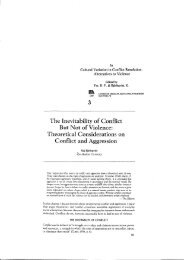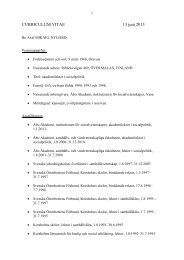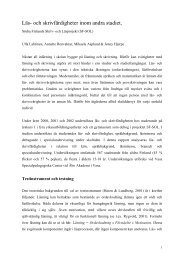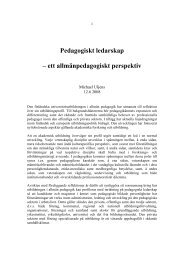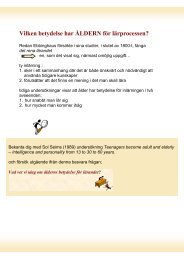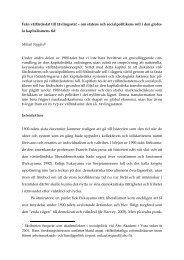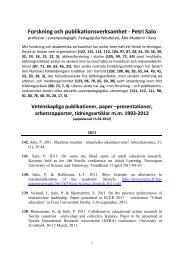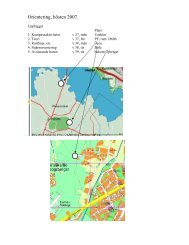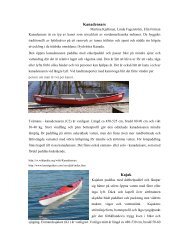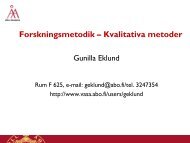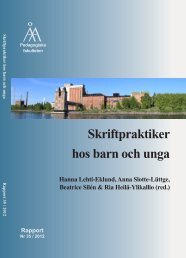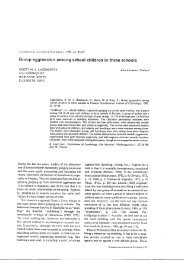Parties, Candidates and Citizens On-Line - Åbo Akademi
Parties, Candidates and Citizens On-Line - Åbo Akademi
Parties, Candidates and Citizens On-Line - Åbo Akademi
You also want an ePaper? Increase the reach of your titles
YUMPU automatically turns print PDFs into web optimized ePapers that Google loves.
the Finnish c<strong>and</strong>idates had independent websites already in the 1996 EP elections [6].<br />
Since c<strong>and</strong>idate-centred systems, as Gibson [7] suggests, result in individualized cybercampaigning<br />
spurring innovations <strong>and</strong> dynamic development in web use, the early<br />
adoption of the web in Finnish EP campaigns makes the Finnish case especially<br />
interesting to explore. Thus, where the c<strong>and</strong>idates – <strong>and</strong> other political actors, as well as<br />
the news media – were probably ‘learning the ropes’ in the 1996 campaign, the use of the<br />
web in the 2004 EP elections may have evolved considerably in terms of both quantity<br />
<strong>and</strong> quality.<br />
2. Research questions <strong>and</strong> underpinnings<br />
This study is explorative. Thus, we chose not to form testable, theoretically based<br />
hypotheses. Rather, two general research questions guide our exploration. First, how was<br />
the web employed by a wide range of actors during the campaign? Second, how did the<br />
electorate respond to the actors’ deployment of the web?<br />
2.1. The importance of contextual factors<br />
In examining the Finnish case, a theoretical assumption is that contextual factors shape<br />
the production of the electoral web spheres creating opportunities for information <strong>and</strong><br />
engagement to the voters (see also the introductory article of this theme issue). We have<br />
stressed above the importance of high internet access <strong>and</strong> the c<strong>and</strong>idate-centred electoral<br />
system in Finl<strong>and</strong>. In addition, it should be mentioned that the c<strong>and</strong>idates usually have<br />
own support groups, consisting mostly of political amateurs, whose role is to organize<br />
campaigning activities, fundraising <strong>and</strong> generate publicity [5]. As to the c<strong>and</strong>idates’ view<br />
of campaign websites, a survey conducted by Suomen Lehdistö, The Finnish Newspapers<br />
Association’s periodical, shortly before the 2004 EP elections, showed that more than<br />
one-third of the c<strong>and</strong>idates regarded the web as being a very important tool in their<br />
campaigns [8]. However, another one-third deemed the web as being unimportant. These<br />
c<strong>and</strong>idates nonetheless had launched their own sites because, in their words, ‘it was a<br />
must’ <strong>and</strong> thus followed current fashion. Overall, the c<strong>and</strong>idates emphasized newspaper<br />
advertising as the single most important form of publicity.<br />
The Finnish multi-party system, in turn, is relatively fragmented [9]. The core<br />
consists of three parties, the Social Democratic Party, the Centre Party, <strong>and</strong> the National<br />
Coalition Party. These capture the majority of the votes (usually around 60–70 per cent)<br />
in national parliamentary elections. Besides these major parties, there is a group of minor<br />
parties as well as numerous fringe parties. In general, the EU opposition is limited to<br />
some of these fringe parties, while the main parties are, generally, favourable to European<br />
63



